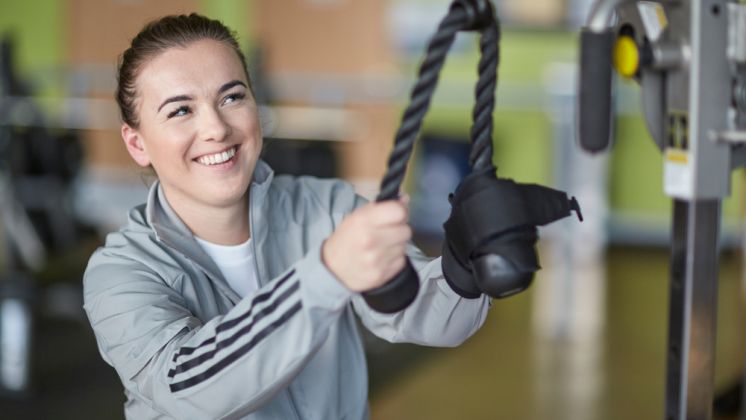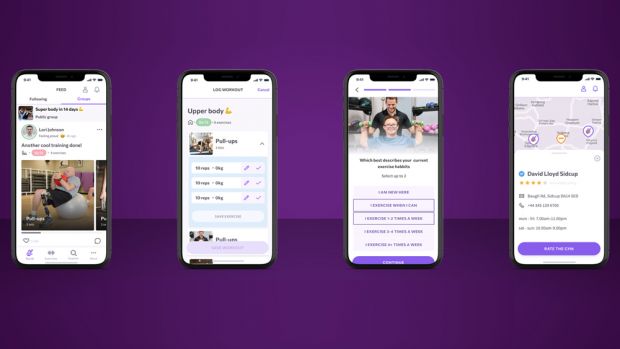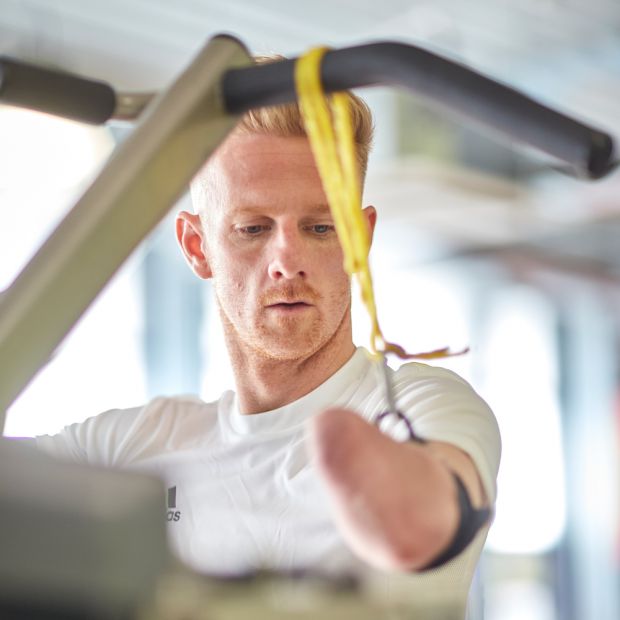Paralympian Ali Jawad Launches The Accessercise Fitness App
Accessercise is designed to help disabled people get active and find accessible gyms

The Olympics and Paralympics are incredible events that can inspire people from all walks of life to get active and try new sports. But if you have a physical impairment, a lack of accessibility in fitness facilities is a barrier to acting upon that inspiration.
Paralympian powerlifter Ali Jawad is aiming to help on that front with his new app Accessercise (App Store and Google Play), which not only has a video library of exercises that are suited to certain impairments, but also allows users to rate gyms on their accessibility so others can more easily find suitable venues.
We spoke to Jawad about Accessercise and the problems disabled people can face in accessing fitness facilities.
What made you create the app?
During lockdown, when you have more time to reflect on life in general, I questioned why I was the only disabled person in the gym when I was younger. I thought, has that situation changed in the last 15 years? And the answer is probably no.
I’ve been quite lucky in my career that I’ve accessed world class facilities because I’m a Paralympian. But I felt like disabled people who didn’t want to be Paralympians don’t get the access that I have. So I wanted to create something that would bridge the gap in terms of accessibility when it comes to exercise and fitness. It’s a way for disabled people to take control of their health and fitness.
What kind of barriers exist when it comes to accessibility?
My career started when I was 16, so I was fast-tracked to elite level quite quickly and I never really experienced any barriers myself, but when I speak to disabled people in the community, they mention the lack of access in the facilities. Is it accessible? Does the machinery swing away, so they can get into it? What is the knowledge of the staff about their disability? A lot of able-bodied people train disabled people like able-bodied people, which is not right.
Then you’ve got things like having to actually get to a gym or sporting facility, because public transport is quite tough for people with impairments, so you have to drive or get a lift there.
Get the Coach Newsletter
Sign up for workout ideas, training advice, reviews of the latest gear and more.
How does the app work?
When you download the app we ask you what your impairment is. For example, I’m a double amputee, and that means I’d be given a library of exercises performed by somebody that’s a double amputee. These are short videos with a voiceover and subtitles as well.
The person using the app gets to build their own training programme. I’m not an expert on every impairment, but the person accessing it is an expert on their impairment. We give them the tools, and the education and the guidance, and they create their own workout. It empowers and educates them, so they take control.

In terms of other features in the app the game-changer for me is the verified gyms. The user will rate local gyms or sports facilities in terms of accessibility. So hopefully in a couple of years we can gather that data and ask are sporting facilities good enough? Are they accessible enough? And we’ll actually have something to prove it, which I think is great.
Also the app has a social hub where people can share, like and comment on people’s journeys. That community element is really important in terms of motivation.
So the app aims to help people’s confidence?
Sure. A lot of people don’t know what they’re capable of, unless you present the opportunity to them. I’m hoping that people with impairments can get the opportunity to reach their potential.
See related
- Autistic Triathlete Sam Holness Gives His Advice On How To Get Into Sport With A Disability
- Train Like A Wheelchair Tennis Champion With This Workout From Gordon Reid
- “Focus On What You Can Do, Not What You Can’t”: How To Get Into Exercise If You Have A Disability
- How One Pro Runner Is Adapting To Training During The Pandemic
- How To Use Exercise To Help A Long-Term Health Condition
Are more impairments being added to the app?
When I set myself this challenge I knew that to get the content for every single impairment could take years. I’ve started with a few impairments and will then grow it from there. The idea is to add one impairment every couple of months. Eventually I want to not only have physical impairments, but also chronic illnesses and mental health conditions. I’m hoping it’s going to be the most accessible fitness app there’s ever been.

What else can be done to promote accessibility?
I think a lot of it is down to education. We need to think about disabled kids growing up and what environments they’re exposed to. We need to change the mindset of people feeling sorry for disabled people, and give them the opportunity to be equal so they can achieve their potential.
When it comes to gyms and facilities, they need to make sure they’re as accessible as possible, but also increase the knowledge of staff there to make disabled people more confident that they can actually attend the facilities. I’m hoping the gym function in the app where you can rate the accessibility of the gyms will give people more confidence about what facilities are accessible.
Download Accessercise on App Store and Google Play | Free, £11.99 a month, £29.99 a quarter, £64.99 a year

Nick Harris-Fry is a journalist who has been covering health and fitness since 2015. Nick is an avid runner, covering 70-110km a week, which gives him ample opportunity to test a wide range of running shoes and running gear. He is also the chief tester for fitness trackers and running watches, treadmills and exercise bikes, and workout headphones.
